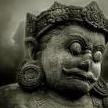Leaderboard
Popular Content
Showing content with the highest reputation on 02/17/2017 in all areas
-

oh my gosh!, C100 ghosting?
ade towell and one other reacted to fuzzynormal for a topic
Trying to help friend-o. You claimed Red cameras need a slow pan. It's a fact you said that. It's also false. It's not brand specific. I was just clarifying the issue as you and I are not the only ones potentially reading this stuff. And FWIW, the actual advice from the specific person you requested was the same advice as various other posters. And, I'd bet that you do need some more guidance about camera operation, but each of us has to find our own way --and at least you're here trying. That's something. We all keep learning. Good luck.2 points -
Those Chanel film are clearly (well) graded, and the crushed blacks seem more like an aesthetic choice rather than a technical limitation. For such a film (high end corporate / brand content) they probably recorded 4:2:2 10 bit via HDMI to get the best possible signal, which is another advantage of the SL over Sony, HDMI out is 10 bit, not 8.2 points
-
The Rokinon 12mm f/2 is a great lens, very small and light, I've used it on a GH4 quite a bit and liked it. Recently I've also seen some test footage from Laowa's new 7.5mm f/2 which looks very impressive, and definitely solves "the wide-angle issue" of micro 4/3. EDIT: Well, I should have read the post better, you say you don't like the exaggerated look of those ultra wide angles, my bad! Best of luck and happy shopping.2 points
-

Travel in Jordan [Sony a7sii + Zhiyun Crane + Sony 28mm f2]
Kubrickian and one other reacted to mojo43 for a topic
Shot this for the tourism board a few months ago, different edit for them, but I had so much footage that I just threw this together. Trying to work on my social media subsciptions2 points -

Raw versus Log, DR limits
TheRenaissanceMan reacted to webrunner5 for a topic
I pulled this off of http://www.xdcam-user.com/ Alister makes a valid point here on the limit of DR with the output in lesser bit compared to the high end stuff. No wonder they look so much better. I know this is talking about Sony cameras, FS5, FS7 but it applies to all cameras. Higher data bits count! "cameras, cinematography, Technology Not all raw is created equal. Log may be better February 11, 2017 Leave a comment This keeps cropping up time and time again. Unfortunately every now and again a new term or buzzword comes along that gets taken as a holy grail term. Two that come to mind right now are log and raw. Neither log, nor raw, are magic bullet solutions that guarantee the best performance. Used incorrectly or inappropriately both can result in inferior results. In addition there are many flavours of log and raw each with very different performance ranges. A particular point in case is the 12 bit raw available from several of Sony’s mid range large sensor cameras, the FS700, FS7 and FS5. Raw can be either log or linear. This particular flavour of raw is encoded using linear data. If it is linear then each successively brighter stop of exposure should be recorded with twice as many code values or shades as the previous stop. This accurately replicates the change in the light in the scene you are shooting. If you make the scene twice as bright, you need to record it with twice as much data. Every time you go up a stop in exposure you are doubling the light in the scene. 12 bit linear raw is actually very rare, especially from a camera with a high dynamic range. To my knowledge, Sony are the only company that offer 14 stops of dynamic range using 12 bit linear data. There’s actually a very good reason for this: Strictly speaking, it’s impossible! Here’s why: For each stop we go up in exposure we need twice as many code values. With 12 bit data there are a maximum of 4096 code values, this is not enough to record 14 stops. If stop 1 uses 1 code value, stop 2 will use 2, stop 3 will use 4, stop 4 will use 8 and so on. STOP: CODE VALUES: TOTAL CODE VALUES REQUIRED. +1 1 1 +2 2 3 +3 4 8 +4 8 16 +5 16 32 +6 32 64 +7 64 128 +8 128 256 Middle Grey +9 256 512 +10 512 1,024 +11 1,024 2,048 +12 2,048 4,096 +13 4,096 8,192 +14 8,192 16,384 As you can see from the above if we only have 12 bit data and as a result 4096 code values to play with, we can only record an absolute maximum of 12 stops of dynamic range using linear data. To get even 12 stops we must record the first couple of stops with an extremely small amount of tonal information. This is why most 14 stop raw cameras use 16 bit data for linear or use log encoded raw data for 12 bit, where each stop above middle grey (around stop +8) is recorded with the same amount of data. So how are Sony doing it on the FS5, FS7 etc? I suspect (I’m pretty damn certain in fact) that Sony use something called floating point math. In essence what they do is take the linear data coming off the sensor and round the values recorded to the nearest 4 or 8. So, stop +14 is now only recorded with 2,048 values, stop +13 with 512 values etc. This is fine for the brighter stops where there are hundreds or even thousands of values, it has no significant impact on the brighter parts of the final image. But in the darker parts of the image it does have an impact as for example stop +5 which starts off with 16 values ends up only being recorded with 4 values and each stop below this only has 1 or two discreet levels. This results in blocky and often noisy looking shadow areas – a common complaint with 12 bit linear raw. I don’t know for a fact that this is what they are doing. But if you look at what they need to do, the options available and you look at the end results for 12 bit raw, this certainly appears to be the case. Meanwhile a camera like the FS7 which can record 10 bit log will retain the full data range in the shadows because if you use log encoding, the brighter stops are each recorded with the same amount of data. With S-Log2 and 10 bit XAVC-I the FS7 uses approx 650 code values to record the 6 brightest stops in it’s capture range reserving approx 250 code values for the 8 darkest stops. Compare this to the linear example above and in fact what you will see is that 10 bit S-Log2 has as much data as you would expect to find in a straight 16 bit linear recording below middle grey (S-Log 3 actually reserves slightly more data for the shadows). BUT that’s for 16 bit. Sony’s 12 bit raw is squeezing 14 stops into what should be an impossibly small number of code values, so in practice what I have found is that 10 bit S-log has noticeably more data in the shadows than 12 bit raw. In the highlights 12 bit linear raw will have more data than 10 bit S-log2 and S-Log3 and this is borne out in practice where a brightly exposed raw image will give amazing results with beautiful highlights and mid range. But if your 12 bit raw is dark or underexposed it is not going to perform as well as you might expect. For dark and low key scenes 10 bit S-Log is most likely going to give a noticeably better image. (Note: 8 bit S-log2/3 as you would have from an FS5 in UHD only has a quarter of the data that 10 bit has. The FS5 records the first 8 stops in 8 bit S-log 2 with approx 64 code values, S-Log3 is only marginally better at approx 80 code values. 12 bit linear outperforms 8 bit log across the entire range). Sony’s F5 and F55 cameras record to the R5 and R7 recorders using 16 bit linear data. 16 bit data is enough for 14 stops. But I believe that Sony still use floating point math for 16 bit recording. This time instead of using the floating point math to make room for an otherwise impossible dynamic range they use it to take a little bit of data from the brightest stop to give extra code values in the shadows. When you have 16,384 code values to play with you can afford to do that. This then adds a lot of extra tonal values and shades to the shadows compared to 10 bit log and as a result 16 bit linear raw will outperform 10 bit log across the entire exposure range by a fairly large margin. So there you have it. I know it’s hugely confusing sometimes. Not all types of raw are created equal. It’s really important to understand this stuff if you’re buying a camera. Just because it has raw it doesn’t necessarily mean an automatic improvement in image quality in every shooting situation. Log can be just as good or possibly even better in some situations, raw better in others. There are reasons why cameras like the F5/R5 cost more than a FS5/Shogun/Odyssey."1 point -

Panasonic GH5 - all is revealed!
deezid reacted to webrunner5 for a topic
Well it looks like I have been very wrong about AF if these videos are to be believed. I am amazed they have been able to boost it that much. Some real voodoo science going on here! I may Have to get one.1 point -
Jesus!!!, you really need to learn to be in silence man, I own a Red One camera and master the speed of panning with it takes some time, specially if you are shooting buildings, again, what you are pointing out is general knowledge, and I am not here to debate what I know or not with you, I am here to learn from more experience people, clearly I don`t see you like one of those people, I was looking for the advice from people very knowledgable in ghosting like @kidzrevil , or like @hyalinejim who catches immediately the tests I forgot raising the ISO, which everyone before his comment also missed!!!! (including you) Again, have a nice day!!!1 point
-
I noticed this one in Particular. It kind of proves what panasonic have been saying all along, that 'the autofocus is significantly better, and more noticeable for video'. And, this isn't even the final firmware.1 point
-

oh my gosh!, C100 ghosting?
Don Kotlos reacted to fuzzynormal for a topic
No, that's not accurate. It has nothing to do with the brand of camera. This is just fundamental camera operation. Shutter speeds and frame rates affect motion blur. Those things are constant across every motion picture camera made in the last 100+ years. It's okay if you don't fully grasps these concepts yet. But, definitely make it a point to understand them if you want to develop your craft.1 point -

Traumatic Experience with Panasonic QC and After Sales
Eric Calabros reacted to sanveer for a topic
I have owned a few Panasonic ILCs until now (the GH2, the GH3 and the GH4 briefly). I really enjoyed using all of them. I bought all of them from my local dealer in Bombay, India, and never once had an issues with any of them. Never. I was supposed to head to Europe at the end of last year, but the plan was shelved, and, sometime mid last year, I was without a camera. My sister happened to be in Australia in August, and I asked her to pick up a Panasonic GX85 from Australia (from Diamonds Camera Adelaide). That was a HUGE mistake. While I have bought a plethora of stuff from B&H, I have never really bought anything from Australia before. I got the camera to India, and there were strange vertical likes (purple and pink), across the screen and viewfinder. I took it to the local service centre at New Delhi, and they didn’t even know Panasonic has a GX85 model. When I told the service centre guys, that I suspected an issue with the sensor, he claimed it was not due to the CCD sensor, but due to some circuity issues with the LCD (completely ignoring my pointing out that viewfinder also had the same issue). I got the hint that he didn’t know anything about cameras when he felt a DSLR would have a CCD sensor. Plus they didn’t spare parts, and said the whole process would take months to fix. I then, obviously had to send it back to Adelaide all the way from New Delhi, only because the Service Centre in India was ill-equipped to handle any issues with Panasonic ILCs here (most model aren’t introduced, and the ones which are … well, their owners pray to God that they never have an issues). I wanted Diamonds Camera to change the camera with a new one, but they got it serviced instead. I got it back to India, and now, while the curious sensor issue has gone (they apparently changed the sensor itself), the camera is unable to focus at anything beyond 2 metres. Basically its like a Dud Camera. And, the service centre most likely screwed up with the sensor installation. Or the focusing needs calibration. I have owned many pieces of equipment before, but, this must be the very first time I owned a camera for 6 months, where for the majority of the period of those 6 months it didn’t work. And, to think of it, I was planning to pick up 2 Panasonic GH5s for my future work. I don’t know how Panasonic can have such lousy Quality Control, and even worse after sales. Maybe that is why almost Nobody in India uses a Panasonic. Almost everyone uses a Canon, Nikon or more recently Sony. First, most of their models never get introduced here. And the ones that are, mysteriously, cannot be serviced. In all fairness to Diamonds Cameras, they have asked me to send it back to Australia, for replacement with a new camera, and they have also been gracious enough to say that they will cover the to and fro expenses of the international courier. The only issue is now that I have had such a terrible experience with Panasonic, that I almost certain I won’t be touching another Panasonic Camera with a 10 foot barge pole. Also, that the International Courier will keep the camera in transit for atleast 4 weeks, if not longer.1 point -
oh my gosh!, C100 ghosting?
webrunner5 reacted to hijodeibn for a topic
There is no ghosting, I feel happy now, raised the ISO and the blur was almost the same, the last picture that worried me was just an optic effect due to the color of the flowerpot base……clearly I overreacted, well I guess we all have a bad day sometimes….. Dammed XC10 !!!!!!, I am seeing ghosting now everywhere !!!! Thanks man, I totally forgot to raise the ISO to confirm, good catch!!!!1 point -

GH5 Noise Reduction @high ISOs simply sucks...
Justin Bacle reacted to TheRenaissanceMan for a topic
Ironically, it takes powerful lights to create the contrast ratio necessary for a traditional "dark horror" look. Horror sets aren't dark at all to the naked eye.1 point -

oh my gosh!, C100 ghosting?
webrunner5 reacted to fuzzynormal for a topic
Well, we don't know how violently the lens was panning when those shots were taken. Looks well within normal motion blur probability to my eye. Why are we looking at stills anyway? The c100 is a video camera. The OP should upload the actual clip.1 point -

Panasonic GH5 - all is revealed!
mechanicalEYE reacted to webrunner5 for a topic
More GH5 video tests from Personal View. http://www.personal-view.com/talks/discussion/13179/gh5-panasonic-camera-from-anticipation-to-love-or-hate/p451 point -
Motion blur - what do you expect when you wave a camera about with a 50th sec shutter1 point
-

oh my gosh!, C100 ghosting?
noone reacted to Don Kotlos for a topic
Can't see any ghosting, only motion blur.1 point -
Cameras With 4:3 Anamorphic Mode?
webrunner5 reacted to christrad for a topic
One answer : 4:3 don't crop horizontal flares! I quit GH4 for the colors, now i'm happy with my NX1 except the 16:9 crop my flares :(.1 point -
There was a lot of obvious color grading in your video ("Dream Drives"). I thought the whole point of the EOSHD settings was to achieve a look *in the camera* not by color grading in post. Your video, whatever its other merits, looks nothing like the colors you get from the EOSHD Pro color settings out of the camera. As I understand it, these are specifically not settings for major color grading in post.1 point
-

Traumatic Experience with Panasonic QC and After Sales
sanveer reacted to Andrew Reid for a topic
Was the service centre in India an authorised Panasonic one? Doesn't sound like it. Sorry you had such bad luck with the faulty unit! Arikhan You don't have the figures to hand on what Panasonic spends on marketing and what they spend on support. None of us do. So you're speculating. There are always going to be parts of the world that don't have perfect service coverage. Same is true for every single camera manufacturer even Arri.1 point -

Traumatic Experience with Panasonic QC and After Sales
sanveer reacted to Eric Calabros for a topic
Apparently customer support budget is mostly concentrated on few markets where they feel they have more chance to grab market share, like Europe.1 point -
Panasonic G7 or Sony a6300 for feature film
webrunner5 reacted to tomsemiterrific for a topic
I shot this video today using the G85 using the metabones EF to MFT speed booster and the Sigma 50-100 1.8.1 point -
A note about scaling in Windows 10 - it was on by default when I first hooked up this LG 4K monitor and I couldn't believe how bad it was. Everything, including text, was really soft and I thought I had some kind of driver issue. Turns out Windows scaling just sucks and doesn't even look as good as native 1920x1200 on my ancient Dell 24". Apparently Mac has a scaling (Mac has always been better with fonts) but if you're a Windows user I would not recommend relying on scaling.1 point
-
It isn't something you say, it's something you do; if you are not sure what you are bringing to a production, maybe you are not ready for such a prominent role, yet. To be exposed on a big set it can be the worst thing ever happen in your life! Start humble, and step by step build your arsenal (skills, knowledge, experience). Maybe you should ask to these Bollywood producers if they have a smaller part for you on a big production, or a bigger part on a smaller production. There are sets with tens, or even hundreds of people, in front and behind the camera, you have to be ready to solve swiftly and adequate any problem arise and always perform at maximum level.1 point
-

My Review of the Zhiyun Crane 3-Axis Gimbal
Gregormannschaft reacted to Parker for a topic
@Gregormannschaft I have used the crane with an a7sII and a Nikkor 28mm AIS lens quite a bit, without any problems, and gotten some pretty awesome results. The extra stability from the IBIS definitely provides a smoother look than with my NX cameras for example. You can still see the screen pretty good too, just tilted up a bit, so it's not like you're flying blind.1 point -

GH5 Noise Reduction @high ISOs simply sucks...
webrunner5 reacted to Justin Bacle for a topic
The problem doesn't come from sensor size actually but more from pixel size. So you could make a great low light m4/3 sensor. But only at smaller native resolutions1 point -

Sankor 16C on FF taking lens
Tito Ferradans reacted to Christina Ava for a topic
thanks! i already follow titos's stuff but i hadnt come up to this!1 point -
Tell them that you have the expertise to fulfill the director's vision and that you have extensive experience in using the language of the camera to tell the story. Of course, you must be able to follow through from such statements, and it certainly helps to have a reel that demonstrates such ability.1 point
-
GH5 Noise Reduction @high ISOs simply sucks...
tomsemiterrific reacted to Simon Shasha for a topic
I have a rule. Even with A7S. If you need more than 1600ISO, you probably shouldn't be shooting there in the first place. Either change the scene's location, or use lights. Simple.1 point -
GH5 Noise Reduction @high ISOs simply sucks...
tomsemiterrific reacted to Kisaha for a topic
@Emanuel the most money I earned the last couple of years are coming from C100 cameras, and those haven't the best codecs in business, or maybe, they do have! I believe my greatest achievement so far was a media installation I did in film school (art department) were I had only a tiny light for orientation purposes, and all the performance was a wall of sound (achieved by a tap of water, a telephone analog signal, a Budha box and a few guitar effects and an amp). The key was that the lack of sight enhanced imagination. It is how you use your tools I guess.1 point -
1 point
-
Cameras With 4:3 Anamorphic Mode?
Flynn reacted to elgabogomez for a topic
Maybe on a 4:3 crop you feel less guilty of the crop, when reviewing your footage the 3.56:1 composition sometimes looks so great that you don't want to adhere to the cinema "standard", if the camera is doing it for you is as we say in México "eyes that don't see, heart that doesn't feel " (ojos que no ven, corazón que no siente) :D1 point -
@sanveerI can upload it on vimeo but I think the point is to have the original file and try grading it. Looking at compressed video on vimeo won't help much to assess the grading latitude. What do you think ?1 point
-
Panasonic G7 or Sony a6300 for feature film
Kisaha reacted to elgabogomez for a topic
it is a low light scouting with the a6300. I believe 1600 was the max iso. Lens turbo + 50mm 1.8 canon fd + kowa 16s1 point -

What entry drone for paid projects?
Christina Ava reacted to OliKMIA for a topic
I've been shooting drone for a long time. On a pure technical standpoint (I'm not going to enter in the legal aspect) - Karma: the drone is big, takes forever to warm up, the gimbal has a lot of drift, the radio link is weak and it's not very cheap ($1200 with the GoPro). In other words this is not the best bang for your bucks, nothing dramatic but there is much better on the market. Just GoPro first shot at it. Perhaps after the recent recall, GoPro fixed some issue, we'll see... - Phantom 3 : the Phantom 3 Pro films in 4K, the P3 Standard only in 1080. DJI recently stopped selling this drone but there is a lot of inventory and you can still buy a brand new unit for cheap. The IQ is enough for most internet stuff however the max bitrate at 60mbps is a little bit weak especially if you shoot in 4k. - Phantom 4 and Phantom 4 PRO: the Phantom 4 is just an updated Phantom 3 with front sensor (collision avoidance). Nothing very different on the IQ compared to the P3Pro However the Phantom 4 PRO has a much larger sensor (one inch) so better DR, ISO and quality overall. The bitrate also max out at 100mbps which is good especially with the h265 codec (but a pain to edit right now), you can still record in h264 at 100mbps. It also does 4k60. It's the most expensive one ($1500) - Mavic: nice and small portable drone, ok price at $1000 but hard to find at the moment (sold out). Offers collision avoidance (front) like the Phantom 4 and 4 Pro. On the con side the drone is a bit too light for windy days (jello and vibration issue) and the bitrate is back to 60mbps. - A note about the focal (FF equivalent): the Phantom 3 Pro and P4 are 20mm, the Phantom 4 Pro is 24mm and the Mavic is 28mm. Keep that in mind depending of what you want to do. - Other drones ? The Yuneec and Walkera make ok drones but DJI products are just better - Is is hard to fly? not really, these drones are full of automation, the flight is assisted by GPS, they will come back to the landing point if you press a button (RTH), they will also calculate your distance Vs battery and start flying back if the battery is too low based on the distance. Some have collision avoidance system. If you are a bit tech friendly and played video game in your life you won't have any issues. To give you and idea, once you start the drone and take off, the thing will stay in the air and hoover by itself until you move the command. It won't drift thanks to the GPS. Can't be easier than that ! Conclusion: You could start with a Phantom 3 standard (1080 max) or P3Pro for $500-800 new or even find cheaper used unit (check the hundreds available on Craigslist and ebay). The IQ is good enough for most internet stuff (similar to gopro), you won't break the bank and/or cry too hard if you crash. The Phantom 4, 4 Pro and Mavic have the front sensor for collision avoidance if you are a noob. Basically the drone will stop automatically on front of an obstacle. The Phantom 4 Pro is definitely a step up in term of image quality but also the more expensive. Last thing, if you buy a drone here is what YOU MUST do and understand before flying: 1. compass calibration, 2. IMU calibration, 3. return to home (set the correct altitude), 4. difference between the flight mode (ATTI and GPS). Check the thousand of tutorial available on internet. Nothing complicated but ignoring these simple things will lead to crash. Be smart, not like Casey Neistat. Here is what I did with a Phantom 3 Pro a few years ago. Fair enough1 point


